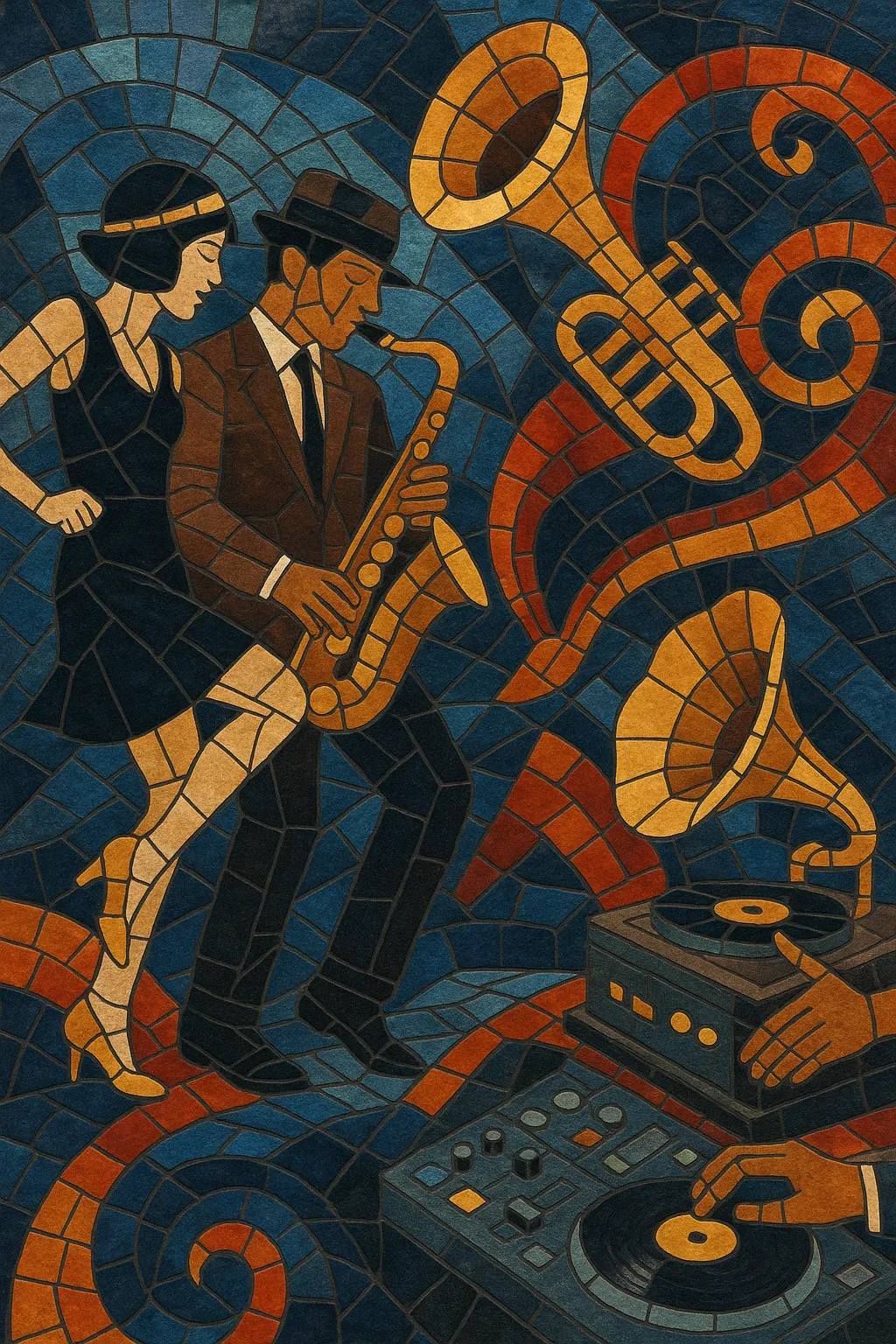Electro swing fuses the timbres and rhythms of 1920s–1940s swing and big band jazz with modern electronic dance production.
Producers sample or recreate vintage horn sections, clarinets, crooner vocals, and walking bass lines, then place them over four‑on‑the‑floor house grooves, syncopated breakbeats, and punchy electronic bass. Typical tempos sit around 110–128 BPM, with swung/shuffle hi‑hats, call‑and‑response horn riffs, and jazz harmony (ii–V–I cadences, extended 7ths/9ths/13ths). Vocals range from retro scat and cabaret‑style singing to contemporary rap or chopped vocal hooks.
The result is a playful, dance‑forward sound that feels both nostalgic and fresh: gramophone grit and brass flair meeting club‑ready drums, sidechain swells, and modern sound design.
Electro swing emerged in continental Europe when DJs and producers began sampling pre‑war swing and big‑band recordings and combining them with house and breakbeat rhythms. Austrian producer Parov Stelar is frequently cited as a catalyst with mid‑to‑late‑2000s releases that set the template: vintage horn chops, jazzy turnarounds, and club‑ready drums.
By the turn of the 2010s, a visible scene had formed across France, Austria, the UK, and Germany. Parisian group Caravan Palace helped push the sound into live‑band territory, while club nights branded around “Electro Swing” appeared in major cities. UK label Freshly Squeezed and a network of promoters and YouTube channels amplified the style. Charting and viral tracks (e.g., Gramophonedzie’s sample‑driven hit in 2010) introduced the aesthetic to broader dance‑pop audiences.
The style diversified into band‑led shows (with brass sections and gypsy‑jazz guitars) and DJ‑producer approaches that emphasized heavier EDM drops or hip‑hop swing (“swing‑hop”). Festivals and retro‑themed parties embraced the visual culture—flapper fashion, speakeasy décor—while production became cleaner, blending faithful jazz voicings with contemporary sidechain compression and modern bass design.
Though its mainstream peak cooled, electro swing sustained a robust online ecosystem of labels, playlists, and channels (e.g., Electro Swing Thing), with periodic resurgences via sync placements, TikTok trends, and new artists updating the formula. The core appeal—vintage jazz energy delivered with modern dance impact—continues to attract both club crowds and live‑band audiences.


